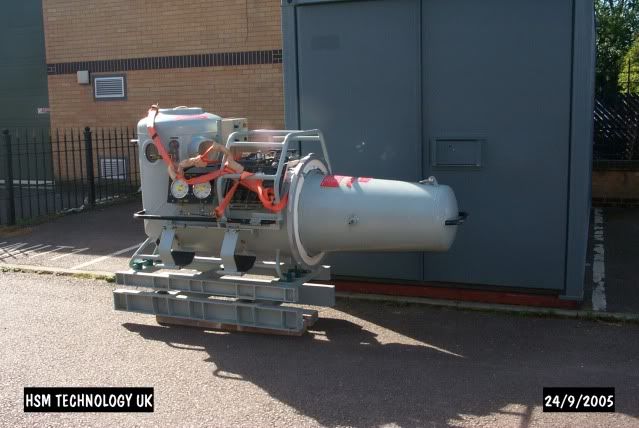Hi John.
I fear your being much too critical of metal pressure vessels in general and the American ASME 8 standard in particular here. ASME has a long history of pressure vessel design and calculation, and as with all other worldwide metal pressure vessel standards the manufacture inspection and test procedures are well written over a long life history of fabrication.
Compare the huge number of ASME metal pressure vessels in the world. Metal shells are easy to manufacture and to repair, welds are easy to inspect with both x-ray and die penetrant testing showing accurate condition of joints. The standards are so well versed it is a simple reliable maintainable cost effective product, both in its manufacture, in its testing and in its life expectancy.
By comparison the US Navy were extremely concerned as to the life expectancy on these soft flexible chambers and the tests you and others were required to do reflects those concerns. You will also be aware of another manufacturer in Italy that had the max depth rating dramatically reduced due to there excessive performance claims.
These flexible chambers fit a very tight military criteria, they are used by young fit well trained navy divers as a low cost lightweight flyaway stretcher. However to compensate for all that they have a penalty of a reduced service life, 10 years after which you have to replace the whole of the pressure tube, and after 20 years and you have to replace the dome ends. You cannot cheaply x-ray or dye pen this flexible construction nor can you repair albeit but the most minor nicks in the ring geometry.
Now not wishing to be rude here, but to compare those costs against a metal shell that in 20 years would only have you replaced the 0-rings every 5 years and the viewports every 20 years at a cost of what? $200 each.
Now I also understand from your post that these flexible chambers are restricted to 1000 cycles of use, If you’re the US Navy I suppose that’s OK one fill a day for a 3 years life.
However when you compare that to the minimum 30,000 plus cycles a metal chamber is expected to operate I feel the by comparison the 80 year design life of a metal shell is a better comparison for a non military application.
The small transportable metal chambers by comparison are around 500 lbs weight but are capable of compressing two divers or a diver and tender to 180FSW (55MSW)
By depth comparison alone these would allow for the full array of hyperbaric treatment tables available. Diver medics course 10 days in a classroom, diver operator course 3 days on a rolling deck.
The reassurance a diver tender inside with a sports diver patient gives is not to be underestimated.
Pushing a sick sports diver in a plastic “coffin” on his own is not something I would be very happy in doing. When they deteriorate, by being sick, panic the management of that patient is pretty slim so I can understand why you suggest to go down the medical device directive route, with doctor on hand to cover liabilities.
However in a two man portable metal chambers although they are only a little bigger but you can give your live aboard customers a free ride in them just so they can get used to the “feeling” being compressed and with unlimited pressure cycles the metal shell design offers you can even use them for equipment testing camera housings etc.
However when the emergency hits you the best feature that these metal chambers offer is reassurance. The diver tender gets in with you to hold the patents hand, chat, reassure them all will be well and in the air break can pass in the tea and coffee through the medical lock. Thankfully at worse you can intubate too. Iain Middlebrook





